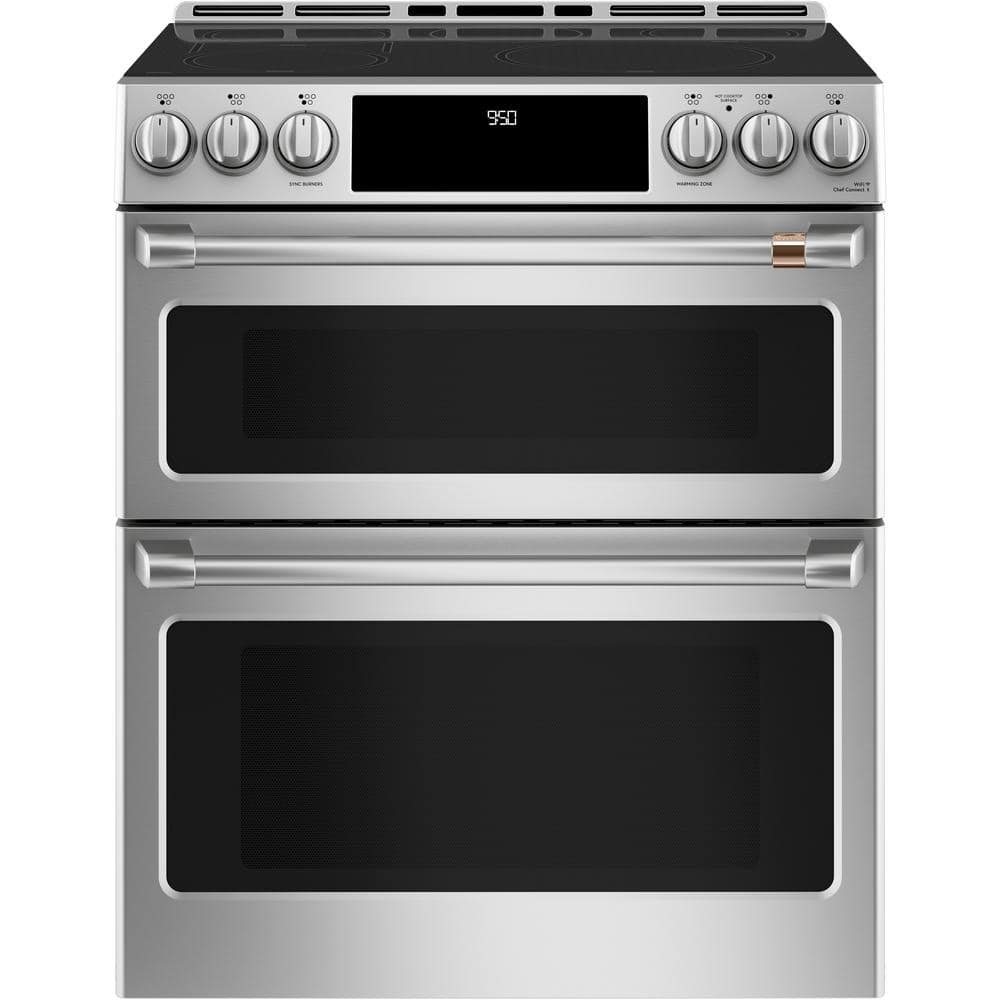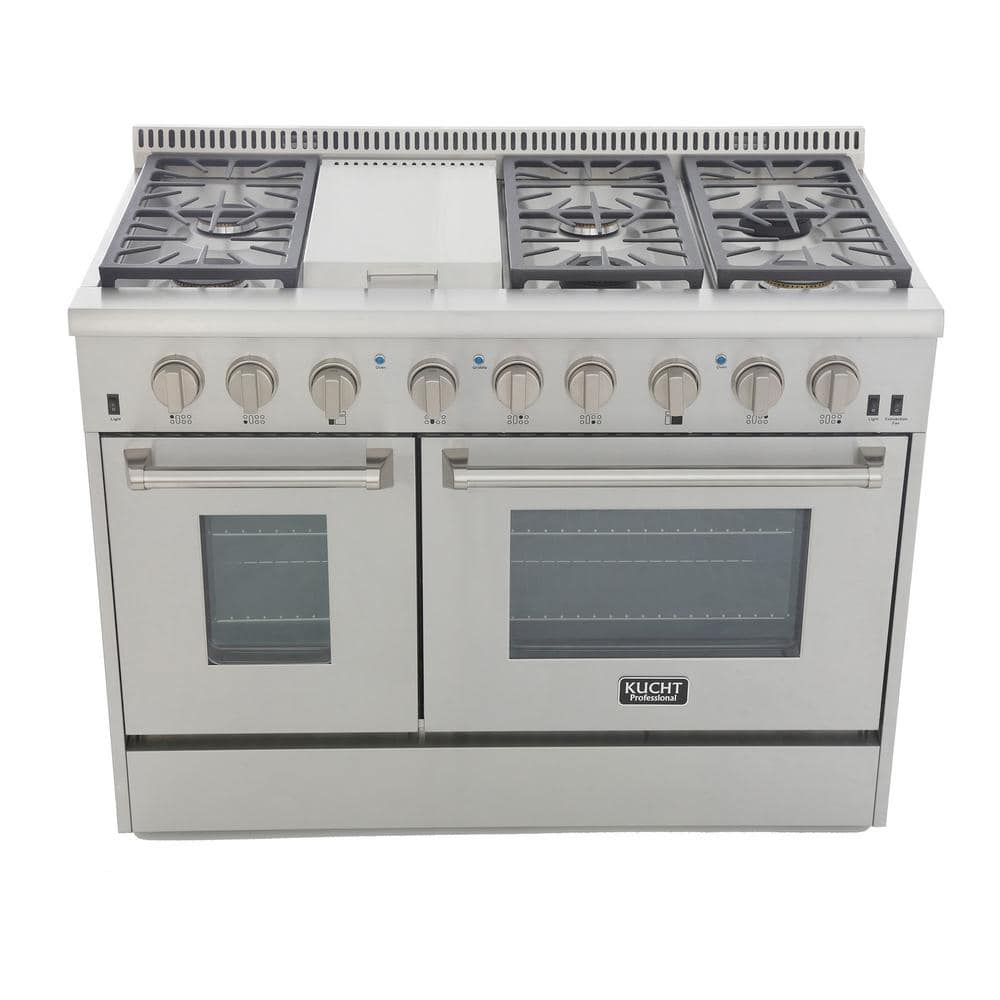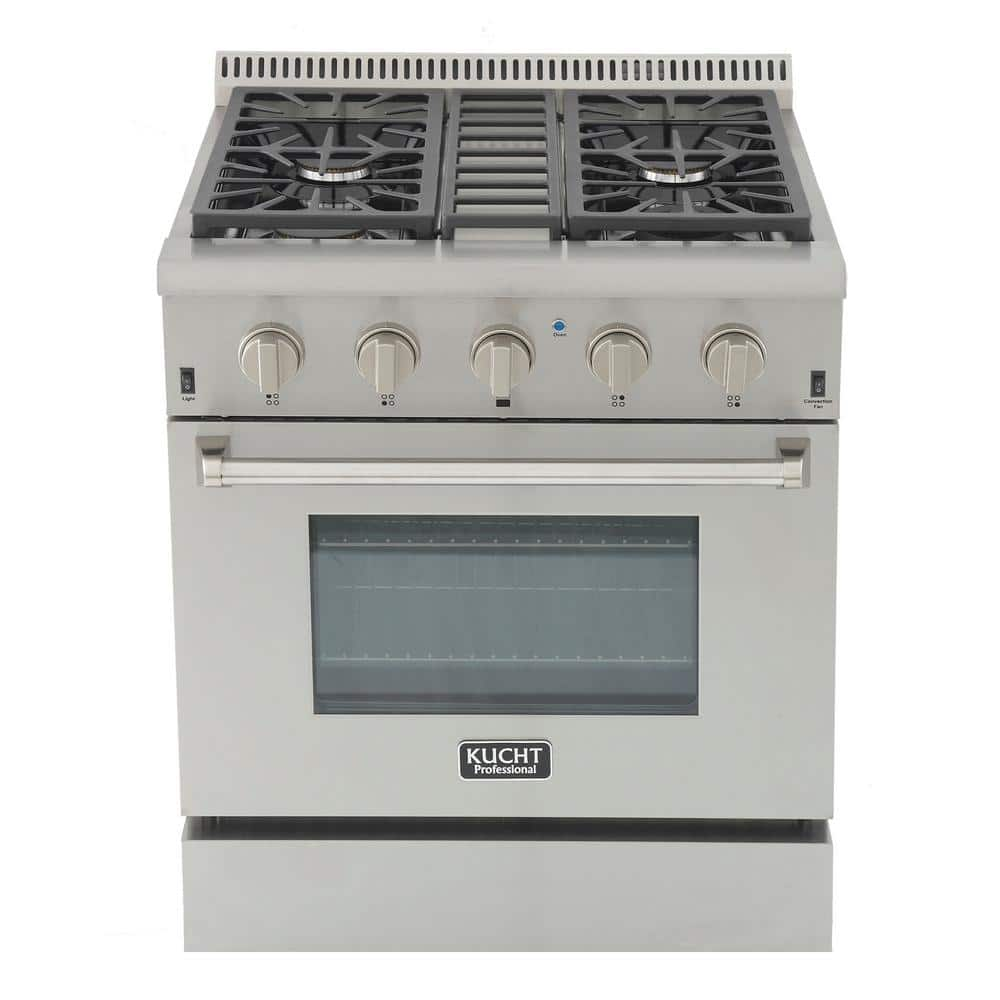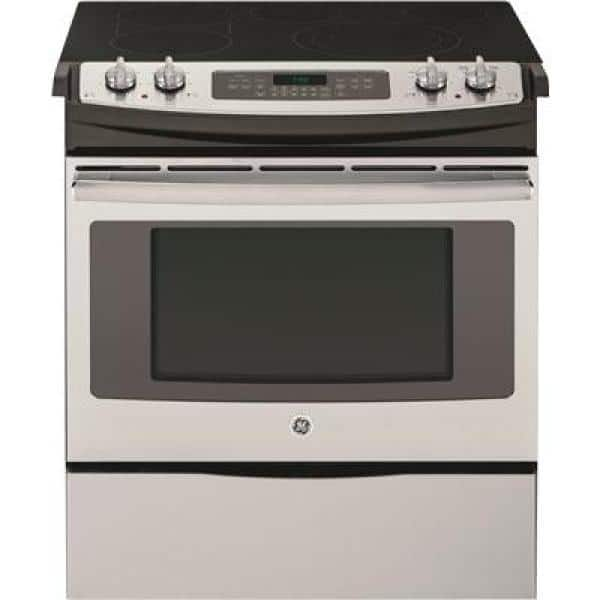Best Ranges for Your Kitchen

Last updated November 25, 2024
Kitchen ranges typically consist of a stovetop and attached oven, and they are available in a wide variety of styles. You'll find ranges with different options for fuel type, size, cooking capacity and more. This allows you to personalize your kitchen to your cooking habits. Whether you prefer electric ranges or gas ranges, this guide will help you determine the best kitchen range for your home.
Table of Contents
Fuel and Cooking Type
Installation Type
Size and Cooking Capacity
Fuel and Cooking Type

Your cooking range can be fueled with electricity, gas (natural or propane) or both, in the case of dual-fuel ranges.
Stovetop Heating Options:
- Gas ranges: Provide heat quickly, allowing easy control of the level of heat. They require a natural gas hookup for installation. However, a majority of gas ranges also come with a liquid propane conversion kit.
- Electric Ranges: Can be installed in most kitchens. They're available in three stovetop varieties: coil, radiant/smooth-top and induction.
- Dual Fuel Range: Typically comprised of an electrical oven for optimum baking, along with a gas cooktop.
- A more traditional electric stove type.
- Cookware is placed directly on a heat source.
- The most inexpensive type.
- Slow to heat and cool.
- Features a flat, ceramic glass cooktop surface.
- Burners heat up from a solid disk/radiant heat element placed under the surface.
- Some models feature warming element between burners.
- Easier to clean than coil-top ranges.
- Features a flat, ceramic glass cooktop surface.
- Burners heat up using magnetic coils placed under the surface.
- Energy-efficient.
- The most expensive range type.
- Provides fast heat to magnetic cookware.
- Doesn’t work with aluminum, glass, copper and some stainless-steel cookware.
What's the difference between conduction and induction heating?
- Conduction heating: Gas and electric cooktops heat only the part of the cookware that the heat touches. Food needs to be turned and rotated during the cooking process to ensure even heating.
- Induction heating: The cookware itself becomes the heating surface. Electromagnetic fields transfer the heat to the cookware. This allows for more precise temperature control and cooking power than traditional cooktops.
Oven Heating Options:
- Conventional ovens utilize a top and bottom heating element to cook.
- True convection (also called European convection) ovens include a third heating element and a fan in the back of the oven. The fan blows heated air throughout the oven to ensure even cooking. Some convection ovens are known as "fan convection" ovens. These don't include the third heating element. Instead, they rely on the fan to blow around the air heated by the existing two heating elements.
Tip: Propane conversion kits are typically included with gas ranges. This is done to accommodate the type of gas your home is equipped to use.
Installation Type

The layout of your kitchen’s cabinets will dictate whether you need a slide-in, drop-in or freestanding range. No matter the type of range you select, an assortment of looks is available. This includes the ever-popular stainless-steel stove and oven combo.
Consider the following when shopping for new appliances:
- 3-prong plugs were often used for homes built before the year 2000.
- 4-prong plugs are typically used for homes built after the year 2000.
When you add professional installation to your new appliance purchase from The Home Depot, a compatible cord is required. The delivery agent carries both types of cords to make sure your home is covered. At The Home Depot, when you purchase a new appliance without professional installation, a 4-prong cord is sent by default. If your home is equipped with a 3-prong outlet, you will need to purchase a 3-prong cord or connector adapter separately.
Size and Cooking Capacity

Range Widths:
- Most standard ranges are 30 inches wide. Professional or dual-fuel ranges are slightly wider, up to 48 inches.
- You may consider ranges that have traditional single ovens and don’t take up a lot of space. Or you can select double ovens that are stacked on top of one another. Double ovens are available in both electric and gas options. They offer more cooking space and can cook multiple dishes at once.
Cooking Capacity:
- When choosing your oven’s capacity, a good rule of thumb is to consider how many people are in your home. Allow one cubic foot of space for each person in your household. An oven with three or four cubic feet of interior space should be sufficient with homes of four or more people.
Finding the best range for your kitchen is simple with The Home Depot Mobile App. Whether you're looking for something stylish or traditional, we've got you covered. It's so convenient to purchase a range that you and your family will love at The Home Depot.
Once you decide on a new or replacement appliance, The Home Depot's Appliance Delivery & Installation page is your go-to resource. It offers comprehensive guidance on ensuring a smooth delivery and installation process. By exploring this information, you can better understand the measurements and requirements needed for your space. This allows you to save time and avoid potential installation issues. Plus, The Home Depot's tips on preparation and scheduling make it easier to enjoy your new appliance as soon as possible.
































